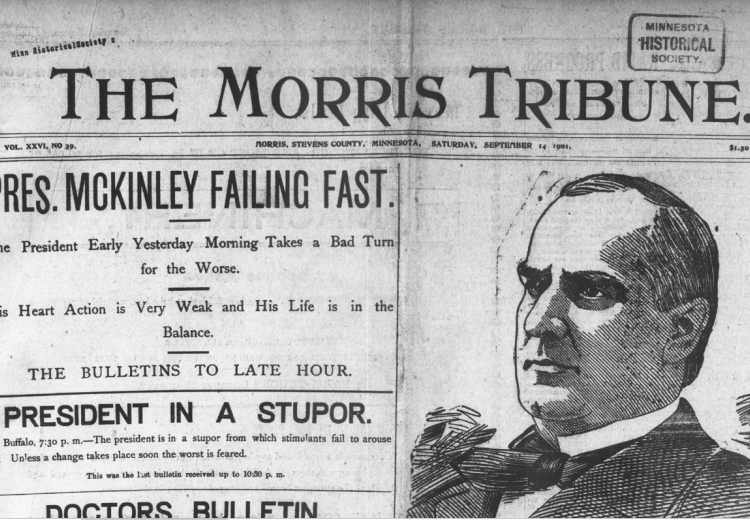Students can use Chronicling America in a variety of ways across humanities disciplines.
As part of an inquiry-based approach to learning, students can:
- construct DBQs to answer an essay or compelling question on a time or topic;
- compare journalistic styles over time, including comparison of how news is reported in a 24-hour access culture compared to the turn of the 20th century;
- prompt further investigation regarding events in U.S. history using the search by state feature to examine local impacts and incorporate them into the evaluation of national events;
- analyze artistic differences and what is conveyed in a painting compared with a photograph or cartoon produced for a newspaper;
- analyze paintings to identify themes and social issues of the time that are being addressed;
- engage in inquiry to find artists not included in museums or official collections from that time to expand who is included;
- pair newspapers and paintings with literary works to examine the historical context for when these works were published, what writers and artists were responding to, and to introduce competing perspectives that place the various sources in conversation with one another about a given topic or time.
Lesson Plans
Martin Puryear's Ladder for Booker T. Washington—Supplement EDSITEment's lesson plan with a full-page biographical news feature on Booker T. Washington and his achievements that shows students how he was viewed by reporters in 1903.
Chronicling and Mapping the Women's Suffrage Movement—This lesson brings together digital mapping and the Chronicling America newspaper database as part of an inquiry into how and where the women’s suffrage movement took place in the United States.
Thomas Edison's Inventions in the 1900s and Today: From "New" to You!—Students can trace the history of Thomas Edison's inventions through EDSITEment's lesson plan and this fascinating article on the history of the incandescent bulb from Chronicling America.
The Industrial Age in America: Sweatshops, Steel Mills, and Factories—Technological innovation isn't always entirely beneficial. Read Upton Sinclair's first hand account of the abuse that accompanied the industrial revolution while engaging in this lesson on the era of industrialization in the U.S.
Voting Rights for Women: Pro- and Anti-Suffrage—Like Sinclair, women at the turn of the century were fighting for social change. Enhance EDSITEment's lesson plan with an article that reveals the opinions of prominent turn of the century women on suffrage.
Remember the Ladies: The First Ladies—Use Chronicling America to find out how First Lady Edith Roosevelt was covered in the newspapers of her time.
 Chronicling America and Literature
Chronicling America and Literature
Nature and Culture Detectives: Investigating Jack London's White Fang—This lesson incorporates advertisements found using Chronicling America for London's White Fang from when the novel first was published.
Mark Twain and American Humor—This newspaper article about Mark Twain's death and legacy complements EDSITEment's lesson plan by helping students contextualize Twain in American literary history.
Walt Whitman's Notebooks and Poetry: The Sweep of the Universe—While they study Walt Whitman's poetry in EDSITEment's lesson plan, students might also enjoy getting to know Whitman a little more personally through this article about his conservative views as described by one of his close friends.
The World of Haiku—Have students check out this article on the haiku, or "hokku" as it was called at the turn of the century, while learning about haiku through EDSITEment's lesson plan.

